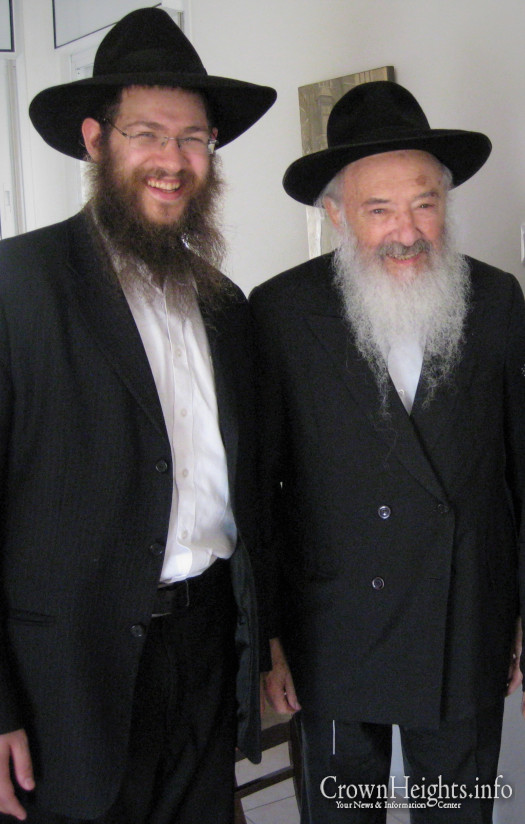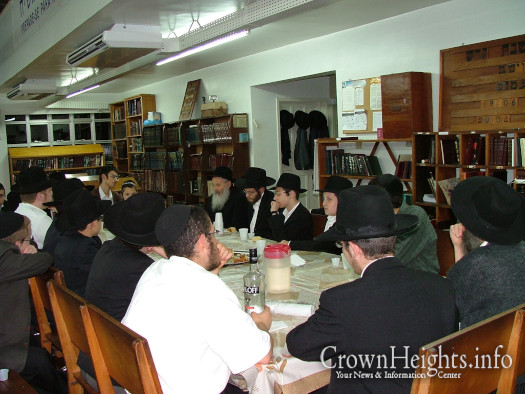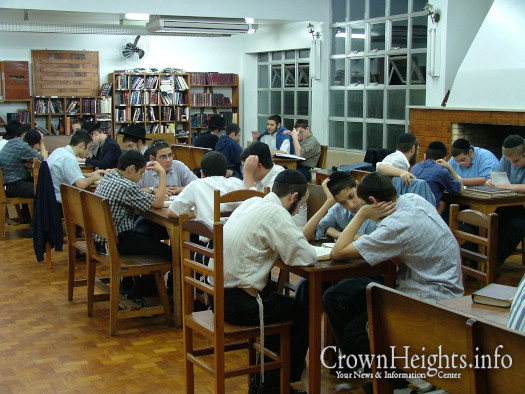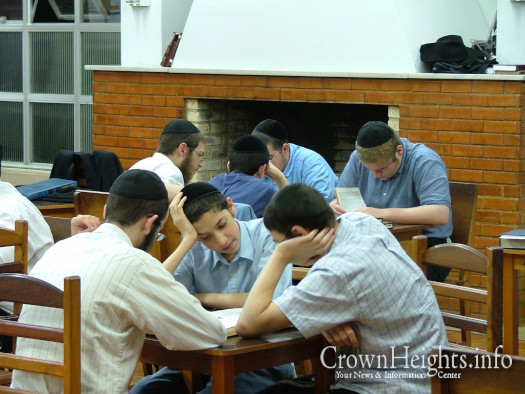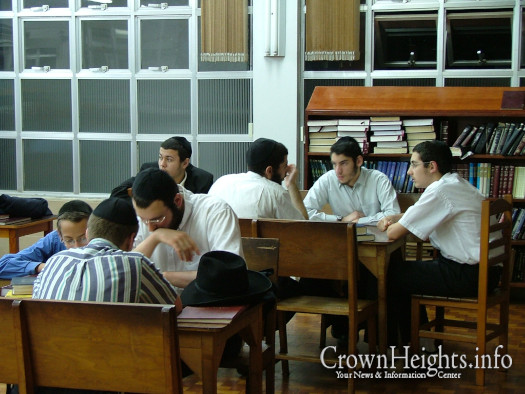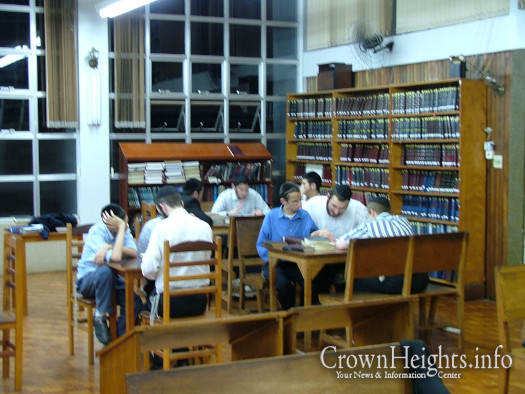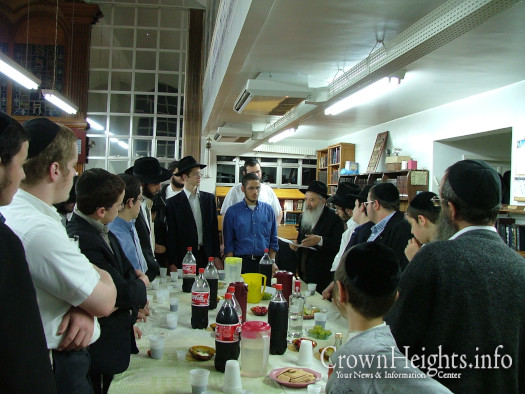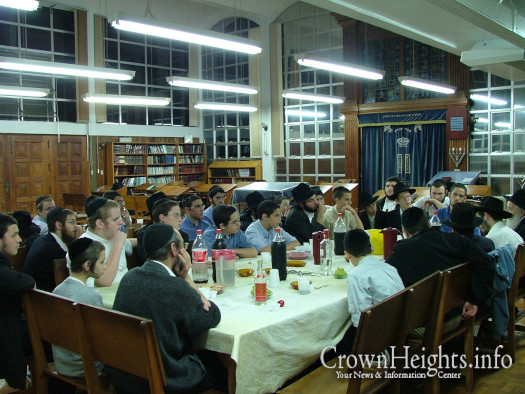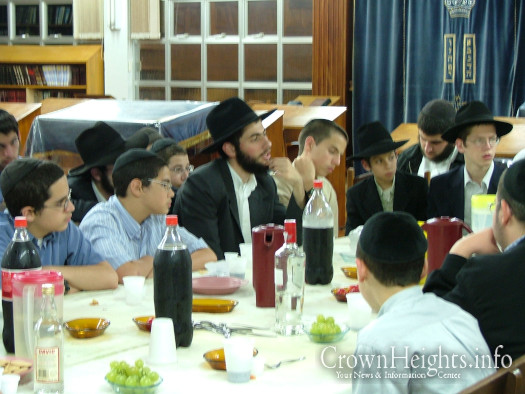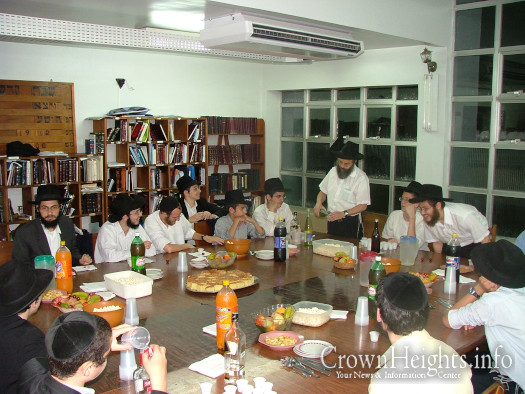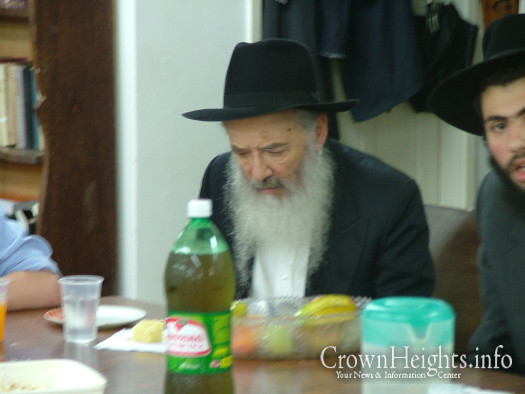
Rav Chaim Binyamini, The Man Who Inspired a Revolution
by Rabbi Menachem M. Yusewitz
Moving my fingers across the keyboard I tremble. A mere continuation to that shudder which ran down my spine upon receiving the news of Rabbi Binyamini’s passing.
Where to begin? How do I -in dry words- do justice describing such a towering figure?
Truth be told, a man of Rav Chaim’s stature, a lighthouse and shining example in all aspects of Yiddishe life, Limud Hatorah, Halacha, Middos, Chassidus, Hiskashrus, mentchlichkait, caring and compassionate – should have been known the world over and need not my inadequate description. However, due to his tremendous humility the reality is different one… Furthermore, I noticed that with all that has been written, somehow a description of his unbelievable character is lacking. How was it to meet him?
Out of tremendous hakoras hatov to a man to whom I owe endless gratitude, I will attempt as a talmid should, to pay respect. ה’ יכפר בעדי as I will definitely be under-describing and not do justice – סהדי במרומים my intention is only to share a glimpse of a giant with the world.
So…
Who is this Yid to whom Brazil owes their Yiddishkait?
How are the vast majority of Brazilian Rabbonim, roshei Yeshiva, shluchim, shochatim and businessmen all his disciples?
Why do these thousands worldwide consider ‘Yeshiva Petropolis’ their home?
Let me start by giving you a short history of Petropolis, a city named after its founder king Pedro the second of Brazil, who established his royal summer palace up in the mountains of the Atlantic forest. The yeshiva itself is set up on one of these peaceful, secluded mountain tops, surrounded by all types of tropical trees, birds, and noises, while frequently visited by its rainstorms.
There is a very strict curriculum and great sense of order, in which the beginning and end of every day (starting at 7:00 AM and ends at 8:30 PM) is Limudei Kodesh, while in the afternoons there is Limudei Chol. Every detail in the school was run by a very special man and great educator Rabbi Chaim Binayamini who alongside his son Rav Avrohom Dovid, selflessly dedicated 50 years to this institution. (When I was there in תשס”ה – 2004, the yeshiva celebrated its 40th anniversary. Rabbi Binyamini ended up in Brazil after escaping the holocaust and living in Israel.)
Like today, I remember my first day coming to Yeshiva Petropolis ‘Machane Yisroel’- driving up the mountain in circles, dizzy from the most stunning of scenes and nauseous to the marrow of my kishkes from the bumpy and winding roads. When we finally reached the peak of calm- the yeshiva, we were greeted by Rabbi Binyamini senior. I was immediately struck by his presence. Instantly I felt I met a man whom I was lucky to know.
On one hand, a real genuine and warm smile. Speaking to him, you had the feeling that the Rav was completely with you – ‘none of him’ was left elsewhere. Literally ‘the warmest of men’. His words carefully chosen and expressed like a father guiding his son: soft and gentle. [see story published by Israeli judge. https://col.org.il/news/134551]
On the other, there was something mighty about him. He was a pillar of strength for all. Maybe it was his steadfast commitment to his life mission, or his faith in the “בורא עולם ומנהיגו” (as he would always say). Whenever he felt his decision was the factor, in his quiet way – he was a lion. His stand made his words feel like iron.
In his most refined manner, he trained us into Chinuch. The bochurim who came on shlichus became full time mechanchim. We took on many roles; teaching shiurim, dorm counselor, mashgiach etc. He taught us Shluchim: “Whenever entering a shiur always have 2 lesson plans” he would indicate 2 pockets… “1st is what you plan on teaching, the 2nd how to improvise and captivate them – when life happens”. He insisted that we accommodate and work with the boys – understand them, while simultaneously demanding the respect for Halacha. Guiding them to adhere to every nuance in our Mesora. He continuously reminded us: these boys are the future models in taking a stand as proud halocha yidden.
He would always say, in his most eidele style: “אם הקדוש ברוך הוא השאיר אותנו כאן, סימן שיש לנו עוד מה לעשות” Hashem had us survive (the war) so we have work to do! Imagine a man who saw so many of his brethren exiled, so many perished, to still exemplify such deep and real Emuna. He saw his life as a sign from Hashem that he still has much to accomplish. Forever forging forward with passion!
There was also something reserved about him, as a survivor at that point he did not reveal much about his war experience (that was 17 yrs ago, he was over 80 – I heard that when reaching Eretz Yisroel 10 yrs ago, things changed in this regard). What we were told -and saw- was that at joyous yomim tovim it was extremely hard for him to be in public. Namely Purim and Simchas Torah (due to the atrocities the Nazis did on those days). On Yom Hakipurim while reading the Asara Harugei Malchus he would weep with his head covered in his Tallis. The only story I personally heard from him was the story of his matzos in Bergen Belsen, and moments of liberation – hearing Shehechiyanu from the American soldier ‘Avrohom Cohen’ leaping off the tank towards them.
The following matzos story (which I heard from him personally in his home) demonstrated how Rav Chaim maintained responsibility-achrayus even throughout the unspeakable horrors of the holocaust. It was back in the barracks together with the Be’er Moishe (Debretziner Rav Z”l) and another Rav or Rebbe (I can’t recall). It was weeks before Pessach when they decided to be mekayem Mitzvas Matza at all costs. They starved themselves and gave their food as payment for wheat flour. When time came, they found a way to prepare and actually bake a few tiny matzos in the camp! (I think they bribed a Jewish kitchen baker). In total it amounted to a ‘kazayis’ for each one of them, they would finally to merit this special mitzvah…
Right before Pesach word got out: “There is matza in the camp”. Everyone knew by whom to inquire about it. Some 300 Yidden turned to them and pleaded “let us fulfill this mitzvah just this time”… After discussing between themselves (3 Rabonim), they decided that it will save the morale of these Tayere Yidden to have this mitzvah even here, it is Pikuach Nefesh. No one will be yotzei the chiyuv of Matza, but all will have the feeling of cheirus. After all the work and weeks of starvation, they broke the matzos into tiny pieces, and distributed them. Dedication to another yid. [NOTE: I have seen this story described differently in the Rav’s name, yet this is how I remember him telling it to me at his home.]
A Rov of Pre-war caliber but so much more. Shortly before liberation, the nazis injected the typhus virus into them. He was sick and with heavy fever going in and out of consciousness. The Nazis pushed them into cattle cars and tried to send them deeper into Germany to hold onto them. Had it not been for his cousin who dragged him along, he would have never made it to the train. Moments away from being shot and dumped into a river, the nes of liberation took place. He remained delirious for some weeks. His typhus fever took a heavy toll – he forgot all his learning. Upon arrival to Eretz Yisroel he dedicated himself to learn all his Torah AGAIN. He then got smicha anew from Rabbi Tzvi Pessach Frank and Rabbi Yizchok Aizik Herzog – then the chief rabbis. He epitomized the values of our עם עולם – eternal nation.
A most special time for me was learning with Rabbi Binyamini. I vividly remember feeling in the presence of some sort of Matan Torah. When discussing learning, I felt transported to somewhere in a European Shtibel of the Alte Heim. He was a piece of history; he embodied our rich past. He not only survived a world that is no-more, he actually changed the course of yiddishe history – in Brazil and the world over. He started off in Petropolis with virtually no yiddishkait around, he went door-to-door knocking and gathering children to teach Torah! To keep kashrus, all food were made by him. Even baking bread was done ‘on the mountain’.
There was a time when I was teaching מסכת ביצה to the talmidim, and somehow discovered that he too was learning that same sugia (Eiruv Tavshilin) -in his personal limud. So I asked him after shacharis if I can come discuss with him the halocha l’maase side of the sugia. I cannot describe the joy he had in seeing another learning properly אליבא דהלכתא. He sat with me at home demonstrating how rishonim derived their psak from their understanding in the gemora. For me the most unbelievable part was how he discussed it with me as an equal. Asking me: “how did you understand the Rosh”…
He was ultra mesudar and the Rebbe wanted him to educate his Talmidim in Petropolis with this ‘Preshburger discipline’! His dedication and unwavering consistency were a source of inspiration and a שם דבר! He had the yeshiva run exactly the way he was educated back there in Budapest, Hungary! The day begins with Davening. All boys are at their stender 7:15 sharp.
Now, with no officially built-in morning seder chassidus, how then can the yeshiva be called Tomchei Tmimim? The Rebbe rathered he educate in his path. So, with the rebbe’s approval the yeshiva was named “Machane Yirsoel” after the Baal Shem Tov.
For the other shluchim and I, this schedule was so totally new. Suddenly, to catch mikve and learn chassidus properly you need to get up 6:00am. As you can well imagine, this was a tremendous culture shock every time bochurim came as shluchim to the yeshiva. Obviously, he was challenged many times (by the shluchim who were also the yeshiva staff, and others). He would then write to the rebbe that maybe the other is correct, maybe they should run the yeshiva, while he moves back to Eretz Hakodesh (when uttering “Eretz Hakodesh” there was special emotion, even yearning felt). I heard that the Rebbe responded: you need to educate the shluchim as-well [not only the yeshiva bochurim].
Also, his chinuch approach was different then what was out there. There was even some sort of understanding that he wouldn’t take shluchim from the US as they won’t be keilim for his chinuch. The shluchim would come and want to get a shturem going- as shlichus bochurim do in every yeshiva. The Rav could not handle it! No signs, no ‘exciting changes’ in sedorim. Period. They need the daily structure, consistently with no pop. He would share with us the rebbe’s directives to assure us this was the correct derech for Petropolis. Once he suggested to the Rebbe: maybe my way of being mechanech is outdated, for the wild winds of today the boys need this new age vildkait d’kedusha. The Rebbe Responded: My shver was a mesudar, anything contrary to seder is not the Derech.
On the “baal-shem’ske grounds” of Petropolis yeshiva, every detail was very thought out by the rav. In return there was a great sense of love and respect for the school and their faculty! The highest point of the Yeshiva mountain is the shul-beis medrash. Boys should always be looking up towards the shul. The lowest point was the Limudei Chol classrooms… On the way down the mountain to the left [towards the boys dorm room] you first pass the structure which houses the home of the Rav, the bochurim shluchim and above us was the married teacher. So we were lucky to have his door across ours. (B’derech tzachus, the Rav put it this way – if you start out on top with milk it turns into cheese by the time you circle to the bottom from bumps.)
Entering his home was a unique experience. You entered a serene world, as though transported in time. In a silent room, behind an aged, worn-out light-brown wooden table he sat immersed in his sefer. Around him like huge fortifying wall were all his “Kvius” Seforim. Like his fortress against all the new-age winds. Yes, every day without fail he learned exercised a Kvius Bnefesh in:
- A daf in gemora,
- A portion in Tur Shulchan Aruch,
- A portion in the Alter Rebbe’s Shulchan Aruch,
- A specific year in hisvaaduyos,
- A Hemshech-year of the Rebbe Rashab’s maamorim,
- Igros Kodesh,
- Mishnayos Zrayim of mitzvhos Hatluyos B’aretz,
- in addition to Rambam & Chitas (Chumash Rashi of parshas Hashovua, Daily Tanya & Tehilim).
- Tehilim was always close by and in use…
His connection-Hiskashrus to the Rebbe was a fascinating one. He was removed from his Menahel position in Yeshivas “Ohr Etzyon” after bringing Rabbi Azriel Zelig Slonim A”H and Rabbi Sholomo Yossef Zevin A”H distinguished eltere chassidim to farbreng and due to slowly warming up himself to becoming a chossid of the Rebbe. He did not do a move without writing to the Rebbe. He told me, he estimated over the years he must have written to the Rebbe like 8 volumes… to which the Rebbe responded bountifully. He received hundreds of letters! One would think the Rebbe had one yeshiva he earnestly cared about… He recounted; the responses were always warm and encouraging. At some point he was hesitating on a return to Brazil. He then got a very sharp answer. Rabbi Benyamini, being as eidel has he was, did not know how to swallow this. He turned to Reb Mendel Futerfas with the letter to help him digest it. Reb Mendel said to him: you need to make a farbrengen! Now you are a chossid. Only to a chossid the Rebbe allows himself to write this way.
His shlichus in Petropolis was of utmost importance. The Rebbe allowed him the privilege of coming only once in 3 years for a short visit. He told of once being at the Rebbe’s farbrengen, only to be shoved out of the benches by chassidim who had “a chazaka” on that place… He found himself crying behind the bleachers. After years of waiting he was finally at the Rebbe’s farbregen, the rebbe is speaking, and he cannot hear. He wrote to the Rebbe in despair: “I feel closer to the Rebbe while in Petropolis.” In response, the Rebbe agreed with him that there is truth to that…
At times, when discussing the place for some to grow in their hanhogos, the Rav would point to a diyuk and expression in the Rebbe’s letter of to him inferring that are 2 details: being a chossid of the Rebbe and joining chassidim…
In recent years, when in doubt how to proceed, he would open a random letter between the Rebbe’s letters TO HIM and take direction. When I discussed with him the answer I received from the rebbe via igros kodesh, upon accepting the Shlichus to Petropolis, he was excited. He did share that it bothered him when some received answers, but did not take it with all seriousness nor fulfil the rebbe’s directives.
Every farbrengen or seder nigunim (raavah d’raavin, before Shabbos ended) he would begin with a sicha of the Rebbe. He introduced with the following words: “Rabeinu Hakadosh Falo B’sichato Hakdosha” -רבינו הקדוש says in his holy sicha. That was his yiras horoimimus for the Rebbe.
After shlichus, I wondered what it would be like to meet him in Eretz Hakodesh. Well, the day came.
When I visited with my wife he was exactly the way I imagined. Relishing the moments being on ‘Admas Kodesh’, where he could be mekayem mitzvhos hatluyos b’aretz – of which he knew so much about [he was a big mumche in agriculture and halacha]. His only lack: not being there with the Rebbe at the complete redemption.
May we merit to be greeted again by Rav Chaim with his warm smile, in his homeland (which he longed for 40 years daily!) speedily with the Rebbe the Nosi in the lead, with the coming of moshiach now!
